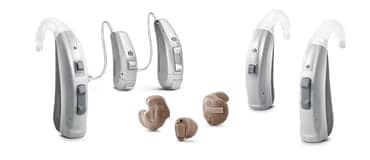While many hearing instrument companies are looking for their next technological move, others, like Siemens Hearing Instruments Inc, are in the future now. Siemens entered the future-present in January 2003 when it opened its new 28,000-square-foot facility in La Mirada, Calif, which was relocated from Cerritos, Calif. Dubbed “the factory of the future,” the La Mirada facility is one of four regional centers operated by Siemens in the United States. The La Mirada facility is the largest regional center in the country and is 30% larger than its Cerritos location.
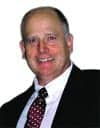


Top and Bottom: Technicians use the latest in digital mechanical assembly technology, highly advanced computer software and laser scanning technology. Middle: Siemens Hearing Instruments technician, Verena Silva, polishes a hearing aid. |
Because it was built from the ground up, Siemens’ designers were able to create a facility that was open and emphasized efficiency. But the factory of the future concept is more than just comfortable, modern work areas. It reflects the company’s new way of doing business. “It became clear to us that the concept of working in a totally integrated system, one that is virtually oriented as opposed to vertically oriented [was the next step for the company’s business development],” says William Lesiecki, director of software and e-business solutions for Siemens Hearing Instruments Inc. “This all became not just a new manufacturing process for us, but a completely different way of looking at the business in the future, so that we became very e-oriented, allowing our customers to have access to us 24 hours a day 7 days a week. Allowing them to decide when they want to place an order for a hearing aid. The whole idea was to try to look for ways that we could take advantage of technology trends, of systems that are being put in place in all businesses in terms of the Internet, giving us a competitive edge and also giving a much better way for our customers to interact and work with us.”
Laser Accurate Scan Replication
The visible result of the company’s commitment to the future and virtual integration is its Laser Accurate Scan Replication (LasR) laboratory, the fourth in the country. This manufacturing process utilizes digital mechanical assembly technology, precision laser scanning, and cutting-edge computer software to create more accurate and comfortable fitting hearing instruments. “LasR is a new arena of technology,” says Christopher J. Marxen, director of manufacturing operations for Siemens Hearing Instruments Inc. “We’re basically building hearing aids in the virtual world, meaning we’re using software to build the instruments, specifically the shell with the vent and receiver hole. But in order to do that, we take an impression that is sent in from our customer and we will scan that impression. And once we scan that impression, we have two options: either we can detail it manually, the way we do it now, and scan it, or through our new detailing scanning software, we can scan the raw impression and on the computer screen cut it and shape it into the model that’s ordered. Once you scan an impression you get a point cloud—which is basically a mathematical calculation of the surface area—and the point cloud is brought into our software, and that software is where we really create the product. And in this case we’re talking about a shell with a vent and a receiver hole. That is when it’s saved in a FTL file and we then build it [out of] pulverized nylon.”

LasR is only a small part of La Mirada’s move into the future which is all about improving all of the company’s process. “This is way more than just a new way to make hearing aid shells,” says Lesiecki. “It’s about moving the business to a completely new way of interacting with the customer, shortening the turnaround time, improving efficiency, and making the whole delivery cycle from the time a patient walks in the door at a hearing care practitioner’s office to the time the practitioner receives the hearing aid and fits it on the patient—making that cycle much more efficient.”

This shift in the process paradigm took, literally, the entire company to implement, adds Lesiecki. The R & D part of the process took about 5 years to complete, with full implementation only occurring in the last few months—but with the various pieces having been rolled out over the last 3 years. The process has changed the way Siemens Hearing Instruments does business. “The LasR process has meant a whole new environment for us,” says Lesiecki. “It’s not just building hearing aids a little differently, we’re really transforming how the company is working now, and we’ve only begun.”
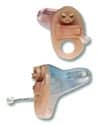
The LasR system has not only changed the way the company does business, but the nature of its product as well. “We’re getting a more accurate fit, and a more accurate fit comes from using technology in scanning, and using software consistently to duplicate the part to as close as we can to what we received,” says Marxen. “In the old technology you had people doing this work, and with people there are inconsistencies because that’s human nature. But technology gives us consistency. The pulverized material [we use in the LasR process] is really nice for hearing aid shells. It’s much stronger, more durable than the traditional UV, which can be thin and brittle. Through [its] layer-by-layer build you get a bit of a textured surface. This textured surface allows for a better, more secure fit in the ear.” Marxen adds that the LasR system has allowed the company’s various production facilities—including La Mirada—to gain in increased utilization during nonproductive hours, adding to its efficiency.
Additional Changes
There have been other changes than just in terms of process. The company’s workers have embraced the new technology, happily moving from manual to virtual labor. “It’s really fun to see a trained technician who’s been doing this work manually for years, and you can transfer their knowledge from the manual world to the digital world and get them behind a computer and they can apply their knowledge,” says Marxen. “And they love it and we love it, and it’s a real success because that transition of knowledge from mechanical to digital is really an interesting thing for the skilled technicians that we have. They’re very excited about it.”
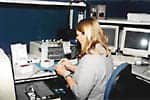
Though relatively new, the LasR process has proven to be a success for Siemens Hearing Instruments. Since its initial implementation 3 years ago, about 200,000 LasR-designed hearing instruments have rolled off Siemens’ assembly lines. Like its sibling US regional centers, La Mirada manufactures the full line of Siemens products, in addition to providing customer service and inside sales. However, unlike the company’s Illinois and Georgia plants, La Mirada still manufactures its full shell using traditional manufacturing methods. Lesiecki says that this is just an issue of capacity. There is also the issue of meeting customers’ needs. “We’re still at a point where if a customer for whatever reason says they want a standard UV-made shell instead of a LasR shell, we will still build that for them,” he says. “And there are situations where that makes sense.”
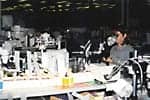
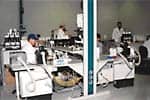
LasR has not only been successful in terms of manufacturing and employee satisfaction, but from the customer’s standpoint as well. “We always invite a lot of our customers into our factories because we like to show off a bit and show them our technology,” says Marxen. “They’re amazed at what we’re doing because you’re spinning shells around on a computer screen and doing some things people have never seen before. It is very impressive. One of the things that our customers absolutely love, whenever they have a hearing aid that a [patient] loses or the dog ate, and the fit was fine, they don’t have to take a new impression. We just bring up the order number and make them a new shell or hearing aid.”
Lesiecki adds that customer feedback about LasR-made hearing instruments has not just been secondhand. He recounts how one dispenser, who is hearing impaired, found her life markedly improved by the technology. “This individual, who uses a lot of our products and converted over to LasR shells, came back to us and said ‘I need to tell you that prior to you coming out with the LasR shell, I’ve always had trouble wearing CICs myself,’” Lesiecki says. “She indicated that she certainly have access to any hearing aid in the market, and she indicated to us that it was only after she got the LasR shell hearing aid she became what she felt was a successful user of a CIC product.”
When ordering LasR-made products, a dispensers do not need any special equipment, though they do need to use silicon impression material in a darker color to aid in the scanning process.
LasR has proven itself to be an improvement over the old system, but that does not mean there were no hurdles to overcome along the way. “A lot of the LasR process on the manufacturing side is about software, and so there were many, many revisions of the software trying to perfect the algorithms that would produce the right shells for us,” says Lesiecki. “Other things we had to learn was what the dispenser had to do differently about taking the impressions. Once they got the LasR instrument, we had to find out if there was anything they had to do differently to modify it. That took us a while [to work out].”
And even though customers do like the new product and have accepted it, there is the occasional complaint. “Like all technology changes, you have those people who have been doing business a certain way extremely successfully, and sometimes people don’t like change,” says Lesiecki. “This is a very small percentage of the people we talk to.”
Into the Future
Even with a few bumps in the road, the new process has definitely given the company an edge, says Marxen. “Besides what it does for manufacturing, giving us more accurate parts and more controlled accuracy, I think you have to look to the future,” he says. “And that future really is how will we get that impression to the factory? Will we have scanners in the office that will scan the impression or will we have a scanner that will scan the ear. So if you couple the Siemens online order form with some sort of scanning in the office, Siemens is positioned [to be] the easiest company in the industry to do business with. It’s a win-win for everybody, because you’ve got the quality and consistency of manufacturing, but then you also have a marketing process once you can scan at the dispenser level.”
Though the 120 employees at La Mirada are living in the future now, Siemens is already beginning to implement this next step on a small scale. The company is doing this by eliminating the physical impression altogether, testing an in-office impression scanner—which has turned the impression process completely digital. The initial feedback from the pilot audiologist has been promising. “She has responded extremely positively to it, but with some real concrete suggestions,” says Lesiecki. “What she’s looking at is what advantage does she get with it, ease of ordering, doing everything electronically. Someday not only do we hope to be doing direct ear-scanning and eliminating the impression, but at the least we’ll be able to have software installed at the hearing care practitioner’s office that lets them know right off the bat—they take the impression and scan it, the software immediately looks at it and tells them what they can build with that impression.”
For all of its futuristic feel, Lesiecki says LasR is really just a sign of the times. “What we’re really doing here is bringing our company into complete step with exactly what’s happening in the culture in the United States and Western European countries where you get a high amount of computerization,” he says. “So from our standpoint we’re following an obvious trend.”
Chris Wolski is associate editor of Hearing Products Report.



